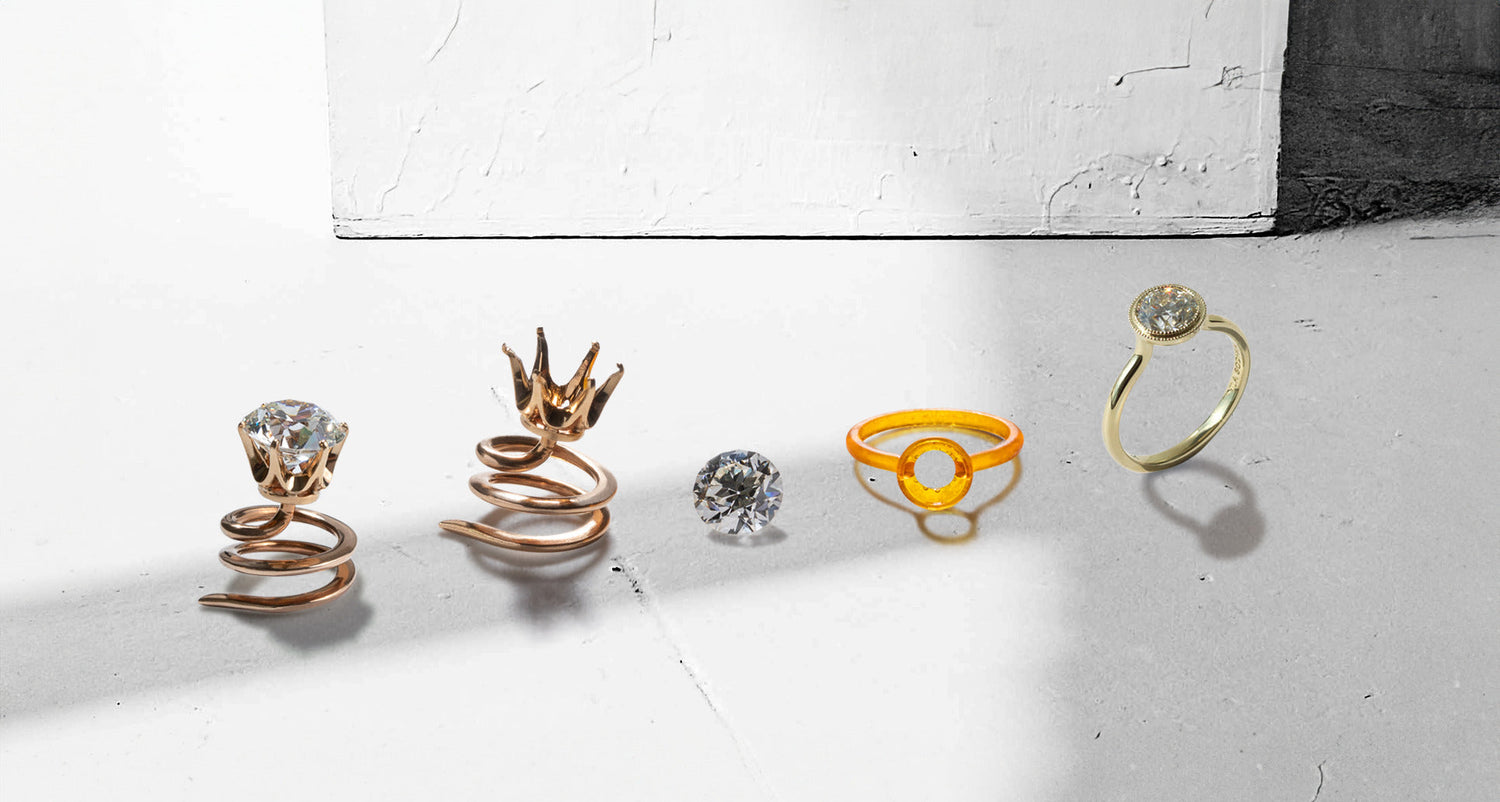Gold has been cherished for centuries, symbolizing wealth, love, and legacy. But not all gold is created equal. If you've ever shopped for fine jewelry, you've probably seen different karat numbers—14K, 18K, 24K—without fully understanding what they mean. As a jewelry designer, I’m here to decode the mystery of gold karats and help you choose the perfect one for your next treasured piece.
What Does "Karat" Mean?
Karat (abbreviated as "K") is a measure of gold purity. Pure gold is 24K, meaning it contains 99.9% gold. However, pure gold is soft and malleable, making it less ideal for everyday wear. To enhance its durability, gold is mixed with other metals such as silver, copper, or palladium, which create different karat alloys.
Here’s how gold purity breaks down:
-
24K Gold – 99.9% pure gold
-
18K Gold – 75% gold, 25% alloy metals
-
14K Gold – 58.3% gold, 41.7% alloy metals
Each karat level has its own characteristics, benefits, and best uses. Let’s explore them further.
The History of Gold Karats
Gold purity standards date back thousands of years. Ancient Egyptians prized pure gold for its divine associations, while medieval Europe developed alloying techniques to create more durable jewelry. The karat system as we know it today became widely adopted in the 19th century to standardize gold purity across different markets.
In many cultures, 24K gold is a status symbol, often used in dowries, wedding jewelry, and religious artifacts. However, as jewelry trends have modernized, durability has become a key factor, leading to the widespread popularity of 18K and 14K gold.
24K Gold: Pure, Radiant, and Luxurious
Pros:
-
Highest purity, making it the most valuable
-
Naturally bright yellow, rich in color
-
Hypoallergenic, great for sensitive skin
Cons:
-
Soft and prone to scratches and dents
-
Not ideal for daily wear, especially rings or bracelets
-
More expensive due to high gold content
Best For: 24K gold is often used for investment purposes (gold bars and coins) and traditional jewelry, especially in cultures where pure gold is highly prized. It’s perfect for ceremonial or special-occasion pieces but not the best choice for everyday jewelry.
18K Gold: A Perfect Balance of Luxury and Durability
Pros:
-
Rich gold color while maintaining good durability
-
Higher gold content makes it valuable
-
Less prone to tarnishing than lower karat gold
-
Hypoallergenic for most wearers
Cons:
-
Softer than 14K gold, making it slightly more prone to wear over time
-
More expensive than 14K due to higher gold content
Best For: 18K gold is ideal for engagement rings, wedding bands, and fine jewelry that’s worn often but not subjected to extreme wear. It offers a perfect balance between purity and strength, making it a popular choice for luxury jewelry.
14K Gold: Durable, Versatile, and Everyday-Ready
Pros:
-
Strong and durable, great for daily wear
-
More affordable than 18K and 24K gold
-
Has a subtle yet warm gold hue
-
Resistant to scratches and dents
Cons:
-
Lower gold content means less intrinsic value
-
May contain more alloy metals, which can cause allergic reactions in some people
Best For: 14K gold is the most popular choice for engagement rings, bracelets, and jewelry that needs to withstand daily wear and tear. Its strength makes it perfect for active lifestyles while still offering the beauty of gold.
Comparing Karats: Strength, Color, and Affordability
| Karat | Gold Content | Durability | Color | Price |
|---|---|---|---|---|
| 24K | 99.9% | Soft | Bright Yellow | $$$$$ |
| 18K | 75% | Medium | Rich Yellow | $$$$ |
| 14K | 58.3% | Strong | Warm Yellow | $$$ |
Choosing the Right Gold Karat for Different Jewelry Pieces
-
Engagement Rings & Wedding Bands: 14K or 18K for durability and beauty.
-
Heirloom or Statement Pieces: 18K for a balance of richness and longevity.
-
Bracelets & Everyday Jewelry: 14K for strength against daily wear.
-
Traditional or Investment Jewelry: 24K for its value and prestige.
How Alloy Metals Impact Gold’s Look and Feel
The addition of alloy metals changes not just the durability but also the color of gold. For example:
-
Rose Gold (a mix of gold, copper, and silver) has a warm, pink hue.
-
White Gold (gold mixed with palladium or nickel) has a silvery-white sheen.
-
Yellow Gold (gold mixed with copper and silver) enhances the traditional golden glow.
Caring for Your Gold Jewelry
To keep your gold jewelry looking its best:
-
Avoid exposure to harsh chemicals, perfumes, and chlorine.
-
Store properly in a soft pouch or lined jewelry box.
-
Regular cleaning with a mild soap solution and soft brush.
-
Professional check-ups for prongs and settings to prevent damage.
Final Thoughts: Gold That’s Right for You
Gold is timeless, but the right karat depends on how you plan to wear it. Whether you want a piece that endures daily adventures or something special for generations to come, selecting the right gold purity ensures that your jewelry remains as radiant as the day you bought it.
At my jewelry studio, I carefully source and craft pieces using the highest quality gold to ensure both beauty and longevity. If you’re looking for guidance on choosing the right gold for your next piece, I’d love to help you find the perfect match!





